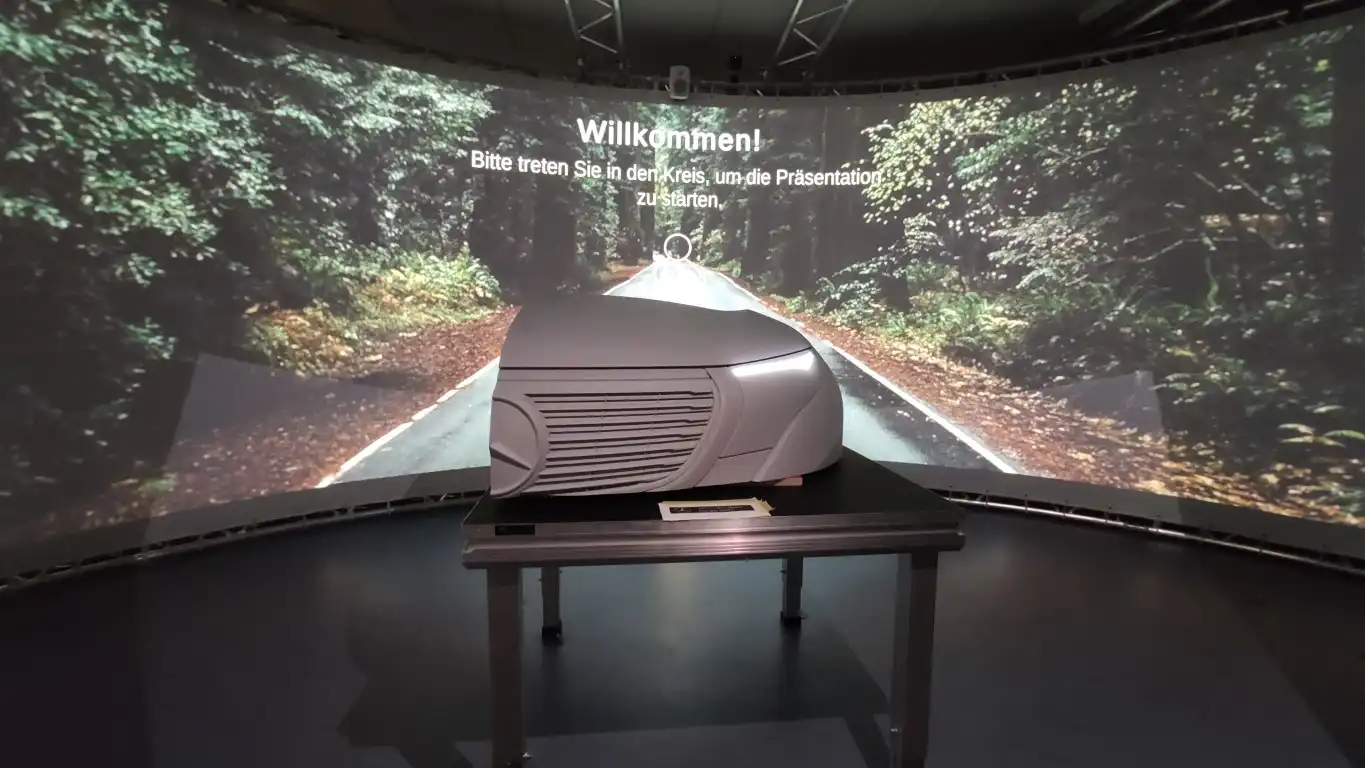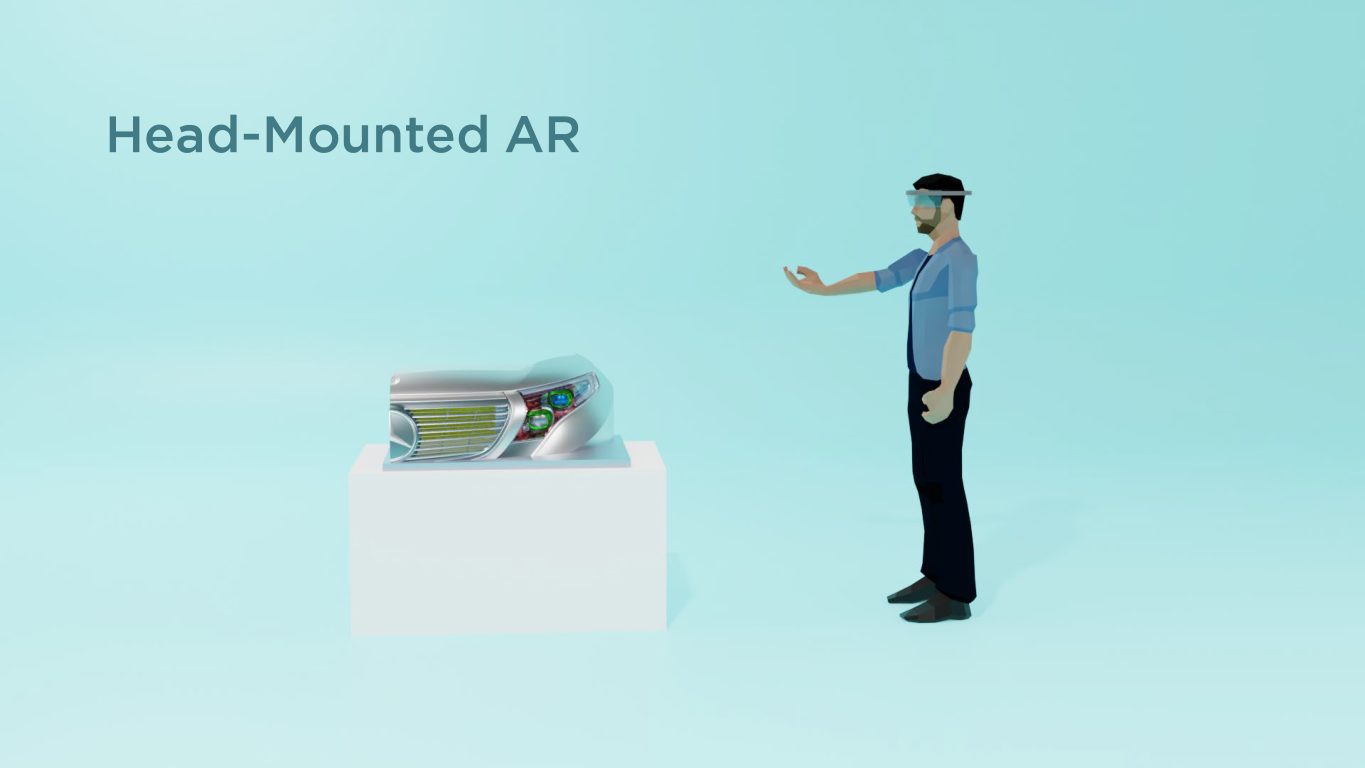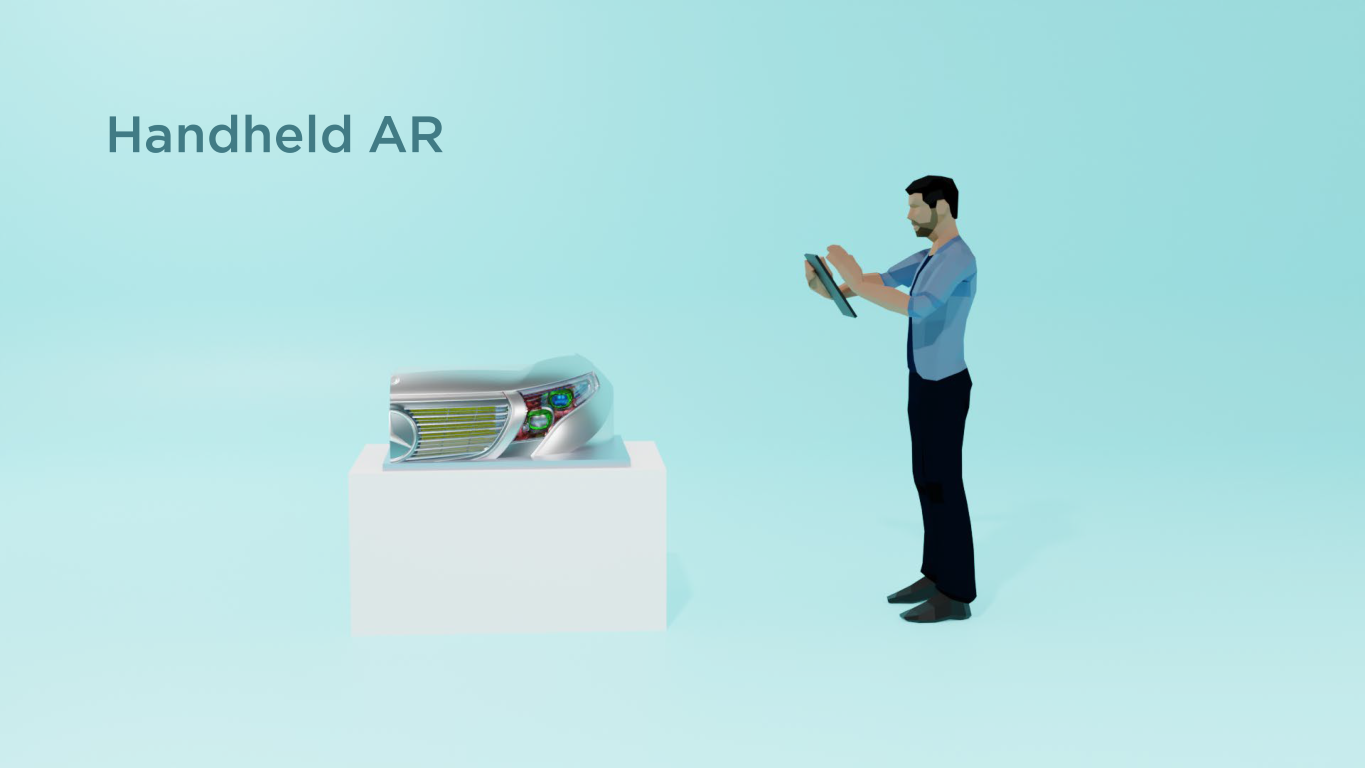Augmented and Virtual Reality

Cooperation Mercedes-Benz Design
We are thrilled to have provided our students with the opportunity to work on an industry-related project during the SoSe 21 semester. The project was conducted in collaboration with Torben Ewe (thank you very much!!) from the exterior design team at Mercedes-Benz, who also invited us to present the projects directly at the Mercedes-Benz Design Campus.
The students’ task was to enhance the design process of lights by utilizing augmented and virtual reality technology. We have deliberately divided the groups in such a way that everyone comes into contact with different concepts/technologies and that there can also be an exchange between the students.
One group created a mixed reality application in which the real design prototype was also shown in VR so that hapitc feedback was enabled. They also added functions such as lighting shading etc.

Another group used projection mapping technology in order to augment the real design prototype. On top of that–to guide the user–an interactive 180° projection was used. The user was tracked using Azure Kinect so that the menu was always present within the user’s field of view (as seen on the image above).

As part of project work, M. Butz used the Hololens 2 in order to augment key visuals of the lighting system directly onto the surface.

On top of that he was able to prototype the “projector”-feature of newer cars, so that the user was able to see content that otherwise was projected on the stress such as a stop sign or lane change signals. As part of our seminar we always encourage students to produce some kind of showreel for their possible applications in the future. Here you can see Marius Butz’ Showreel:
Please be aware of the fact, that the difference of the digital layer on the physical model is due the position of the video camera on the Hololens 2.
And, last but not least, one group used handheld augmented reality to put a digital layer on top of the physical prototype.
